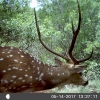Sign in to follow this
Followers
0

help with Google Earth scouting december mule deer
By
MrBojangles, in Mule Deer Hunting

By
MrBojangles, in Mule Deer Hunting